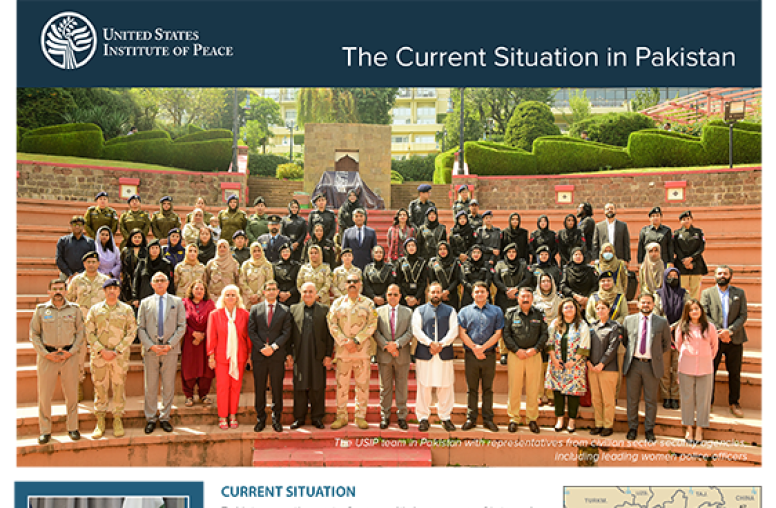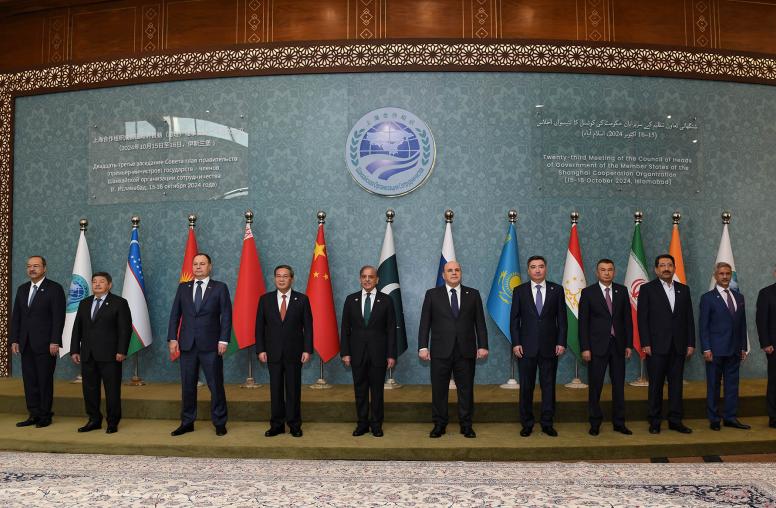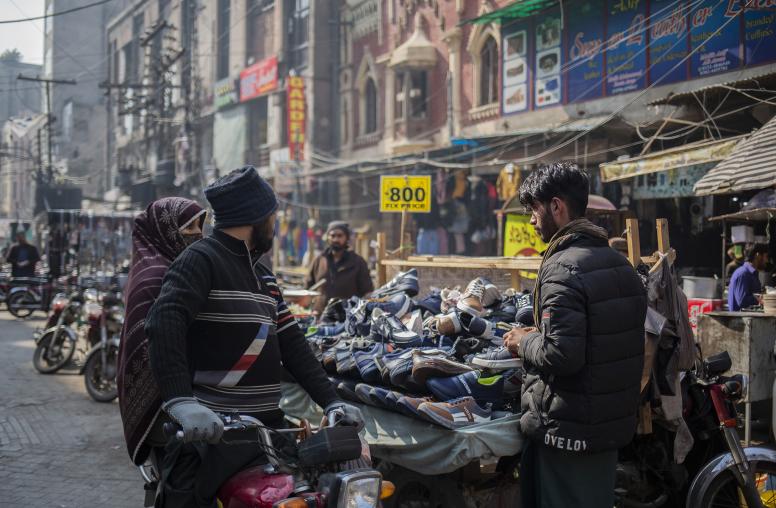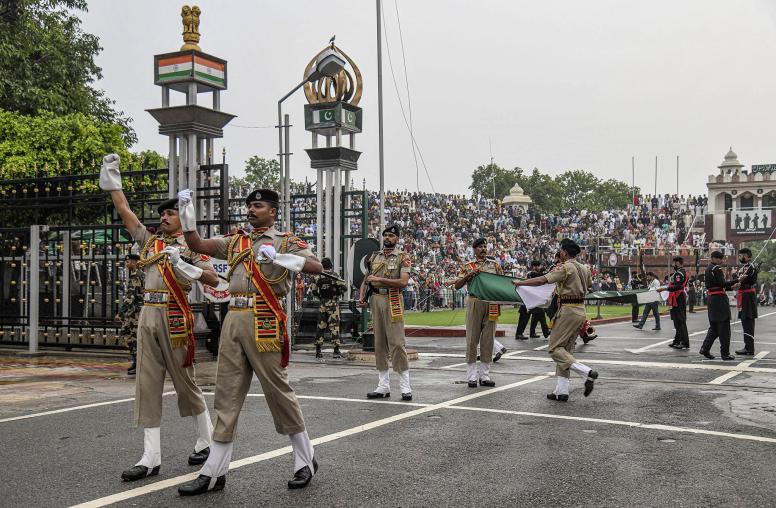Could Pakistan’s Protests Undercut Taliban and Extremism?
Ethnic Pashtuns demand inclusion for Pakistan’s deprived border region.
Tens of thousands of ethnic Pashtuns have held mass protests in Pakistan in the past three months, demanding justice and better governance for their communities. The largely youth-led protests forged an organization, the Pashtun Tahafuz Movement (“tahafuz” means “protection”), that has broadened its goals to include democracy and decentralization of power in Pakistan. The movement reflects demands for change among the roughly 30 million Pashtuns who form about 15 percent of Pakistan’s population, the country’s second-largest ethnic community.

The protest marks “a serious challenge to the Pakistani state, and the state needs to handle it carefully, addressing people’s grievances” rather than trying to ignore or suppress the ferment, according to Imtiaz Ali, a Pashtun writer and analyst. Ali last month wrote a USIP report on stabilizing Pakistan’s “tribal areas”—the sensitive portion of the Pakistan-Afghanistan border where the protests began. Pakistan’s government should use the protests to unstick a stalled reform program that could help stabilize the region, including Afghanistan, in the long run, Ali says. But Pakistani authorities are now doing the opposite, he said.
So far, Pakistan’s government and military leadership are trying to quash the movement by pressuring Pakistani news media not to report on it, Ali said in an interview. Coverage of the protests “is absent in Urdu-language media, particularly TV channels,” and Pakistan’s more liberal “English-language media are doing very little coverage,” Ali said. “This is a bizarre policy that cannot be effective,” he said, because this uprising is Pakistan’s first mass protest movement being organized and promoted largely via social media.
Pakistan’s Border ‘Colony’
The protest campaign erupted in January after police in Karachi killed a popular, aspiring Pashtun fashion model. Police declared that he actually had been a Pakistani Taliban fighter. At the protests’ core have been natives of Pakistan’s ethnic Pashtun border zone with Afghanistan—the Federally Administered Tribal Areas, or FATA. The FATA zone was created in the 1800s by India’s British colonial rulers, who found themselves unable to militarily control the rugged region and its tribes. The British Raj established a loose control by letting the tribes manage their internal affairs, and by mounting punitive military assaults when tribal leaders resisted British wishes.

Many Pashtuns say Pakistan continues to rule FATA like a colony, and police too often stereotype Pashtuns as terrorists. Protesters say the man gunned down in the Karachi police raid, like hundreds of other Pashtuns, was killed in a “fake encounter,” in which police shoot people they consider suspects, and then characterize the incident as a gun battle against armed criminals. Human Rights Watch and other human rights monitors have said police in Pakistan use such “fake encounters” to commit hundreds or thousands of extrajudicial killings each year.
Since Pakistan’s creation in 1947, Pakistan has ruled FATA through a combination of British colonial laws, military power and government-appointed “agents” who wield authoritarian power in their areas. Any hope of stabilizing Pakistan’s border area and reducing the influence of extremist movements, including the Pakistani and Afghan Taliban, depends on Pakistan integrating FATA fully into the country’s legal, political and economic systems, Ali wrote in the USIP report. Now, the most effective way for Pakistan to respond to the Pashtun protests “will be for the establishment to sit and talk with them and expedite this process of integration.”
FATA: A Zone of War and Deprivation
The FATA region is largely jagged mountains and rocky deserts spotted with green valleys that sustain limited agriculture. Its villages and wilderness have been home to violent extremist groups. Afghan refugees poured in from the Soviet occupation of Afghanistan in the 1980s, and Afghanistan’s Taliban movement recruited among them a decade later. After the 2001 collapse of the Taliban regime, FATA became a sanctuary for the Taliban, al-Qaida and allied groups of Arab, Chechen, Uzbek, Uighur and other fighters. The Tehreek-e-Taliban Pakistan (Pakistan Taliban Movement) was born and took control across wide swaths of FATA. Pakistan at times controlled little more than the barbed-wire confines of its military posts dotting the region.
American drone strikes and periodic Pakistani military raids followed, trapping FATA’s residents in a war and shoving FATA localities—Waziristan, Bajaur and others—into global headlines. With FATA as a base, Pakistan’s Taliban seized control of the Swat Valley and districts closer to Pakistan’s capital. Beginning in 2007, the army counter-attacked, eventually launching a decade of military offensives across FATA that uprooted much of its population and destroyed communities. In 2014, a United Nations mission counted one million people displaced by just one of those offensives. (Pakistan estimates FATA’s population at five million people, a figure that FATA leaders dispute as too low.)
FATA’s generations of isolation and years of war have plunged its people into the deepest deprivation in Pakistan. Fully 73 percent of FATA residents live in what development specialists call “multidimensional poverty,” lacking even basics of nutrition, schooling for children, access to electricity, cooking fuel or clean water. Only 28 percent of adults—and eight percent of women—can read and write (compared to Pakistan’s overall adult literacy rate of 57 percent). Schools and hospitals have crumbled. Unemployment is massive. So many Pashtuns have fled FATA that the seaport of Karachi, 800 miles away, now holds the world’s largest Pashtun urban population.
Stabilizing an Extremist Sanctuary
Many Pakistani political leaders and analysts have agreed for years on the need to end FATA’s quasi-colonial status. Under a plan framed by a government committee in 2016, FATA would be integrated into Pakistan’s Pashtun-dominated northwestern province, Khyber Pakhtunkhwa. This would give FATA’s people their first access to legal rights through a court system, and their first effective voice in elections and a legislature, Ali said.
To give FATA’s people a chance to rebuild lives and communities, and confront the extremist movements, a political integration of FATA within Pakistan must include a strong program of economic and social development, Ali writes. And that development effort must pay special attention to education and development efforts for girls and women.
But “the challenge to any proposals for reforms in FATA—and there have been many proposals—has always been implementation,” Ali writes in the USIP report. And the 2016 plan to reform FATA faces at least two obstacles: the need for money and the fears of the politically powerful army.
Even the plan’s supporters say it is unclear that Pakistan has the political will to finance the development of FATA. Pakistan’s “provinces, which cannot agree on [how to share government revenues] among themselves, are likely to be united in opposing” any plan to shunt significant federal funds to improve conditions in FATA, a prominent Pakistani daily, The News, declared last year in an editorial.
Pakistan’s Army Is Critical
And while the military formally has supported the integration of FATA into Pakistan’s state, it seems inclined to fear and resist the current protest movement, rather than to work with it. The armed forces, which have ruled the Pakistani state for nearly half of its 71 years, are allergic to any idea—including the new movement—that appears fueled by Pashtun nationalism.
Military spokesmen have suggested that the protests are being goaded secretly by Afghanistan’s own heavily Pashtun government as a way of promoting an old Afghan claim on Pakistan’s northwestern territories. Afghanistan has never formally recognized the “Durand Line,” which forms the two countries’ border, or Pakistan’s sovereignty over its Pashtun region.
This unresolved territorial dispute underlies much of the decades-long conflict along the border. “A reform of FATA would help to end the safe havens for militancy in Pakistan, which would be good for Afghanistan also, and good for international security,” Ali said. “America needs to work with both sides to bring them together on this issue, for the benefit of everyone.”



